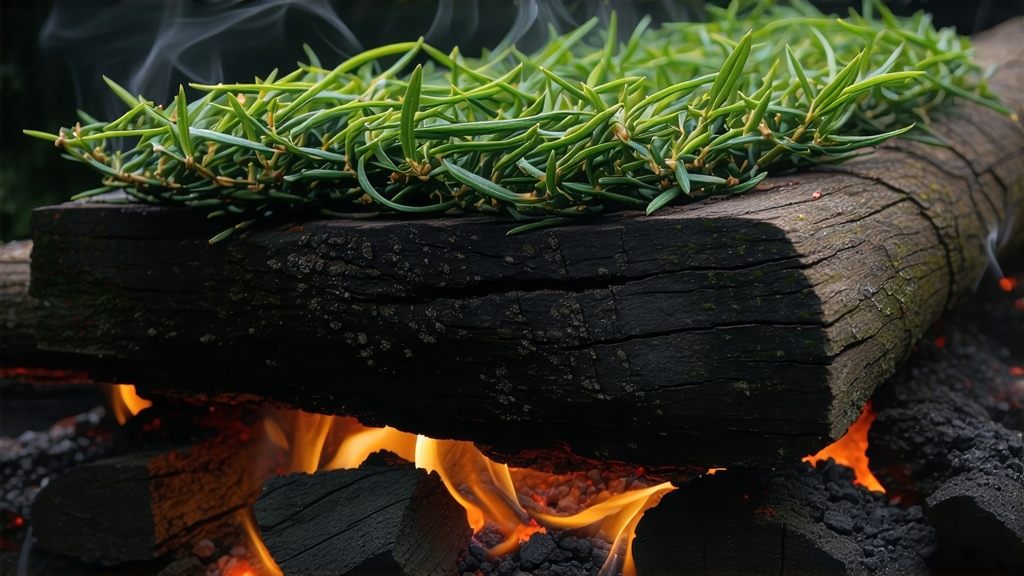
Long before English breakfast tables knew the malty kiss of Assam or the bright snap of Ceylon, a tiny village in the Wuyi Mountains of northern Fujian sent Europe its first taste of what would later be called “black tea.” That village is Tongmu, and the tea is Lapsang Souchong—today celebrated as the forebear of all smoked and fully oxidized teas. To international drinkers the name evokes campfire romance; to Chinese growers it is xiaozhong, “small-leaf cultivar,” the original craft that taught the world how to bend fire, leaf, and time into a single cup.
History: From Ming Border Guards to London Coffeehouses
Local legend fixes the birth year at 1567, late Ming, when passing army units dried tea leaves over pine fires to prevent spoilage on the march. The accidental perfume proved marketable; by 1604 Dutch traders were loading “bohea” (the Fujianese pronunciation of “Wuyi”) onto East Indiamen. When Catherine of Braganza brought the habit to the English court in 1662, the tea she served was almost certainly Lapsang Souchong. Demand exploded: clipper ships raced to keep London salons stocked, and Tongmu’s output became so precious that Qing administrators sealed the mountain pass, allowing only licensed jin-pai (gold tablets) carriers to enter. Thus a tea born of military haste turned into the world’s first luxury commodity, predating even Keemun or Darjeeling by two centuries.
Micro-terroir: Why Only Tongmu Tastes Like Tongmu
The Wuyi range is a UNESCO biosphere where subtropical mist rolls up granite gorges cooled by constant waterfalls. At 27° north latitude and 600–1,200 m elevation, the diurnal swing can exceed 15 °C, forcing the tea bush (predominantly a local cultivar known as xiao ye zhong, “small-leaf species”) to thicken cell walls and concentrate aromatic polyphenols. Surrounding forests of Masson pine (Pinus massoniana) and Chinese fir provide the resinous wood that will later define the tea’s signature smoke. Within Tongmu there are micro-plots—Longdu, Miaowan, Guadun—whose teas fetch triple the price of neighboring townships simply because the breeze carries a sweeter resin note.
Two Styles: Smoke vs. No-Smoke
Purists divide Lapsang into two camps. Traditional Song Zhong (pine-smoked) is crafted only during the cool, dry weeks between Qingming and Grain Rain, when pine logs have lowest sap content. A modern “unsmoked” version, increasingly popular in domestic China, omits the final firing stage and presents a honeyed, longan-fruit character closer to Taiwanese black teas. Both share the same withering, rolling, oxidizing steps; divergence occurs only at the drying phase. This article focuses on the classic smoked style, the tea that once bewitched Samuel Pepys and still perfumes specialty catalogs from Paris to Portland.
Craft: How Fire Writes Flavor
- Withering: Fresh leaves are laid on bamboo mats in the second-floor loft of a Tongmu wooden house. A gentle smoke from the ground-level hearth drifts upward for 6–8 hours, reducing moisture to 60 % while impregnating the leaf with volatile guaiacol and syringol compounds.
- Rolling: Once limp, leaves are kneaded in a cast-iron pan at 70 °C for 20 minutes, rupturing cells and jump-starting oxidation.
- Oxidation: Rolled leaf is piled in pine-wood crates covered with wet cloths. Enzymatic browning proceeds for 3–4 hours; masters sniff every 20 minutes, waiting for a turn from grassy to dried-fruit.
- Pan-firing: A quick 160 °C roast halts oxidation and sets color.
- Pine-smoke drying: The critical signature. Tea is spread on bamboo trays suspended over a pit of smoldering pine embers. The fire is never allowed to flame; instead, a thick white smoke curls for 3–5 hours while artisans flip leaves every 10 minutes. Moisture drops to 3 %, and tarry phenols bond to leaf surfaces. Finally the tea rests in cedar-lined chests for 30 days so smoke can “marry” the leaf, softening